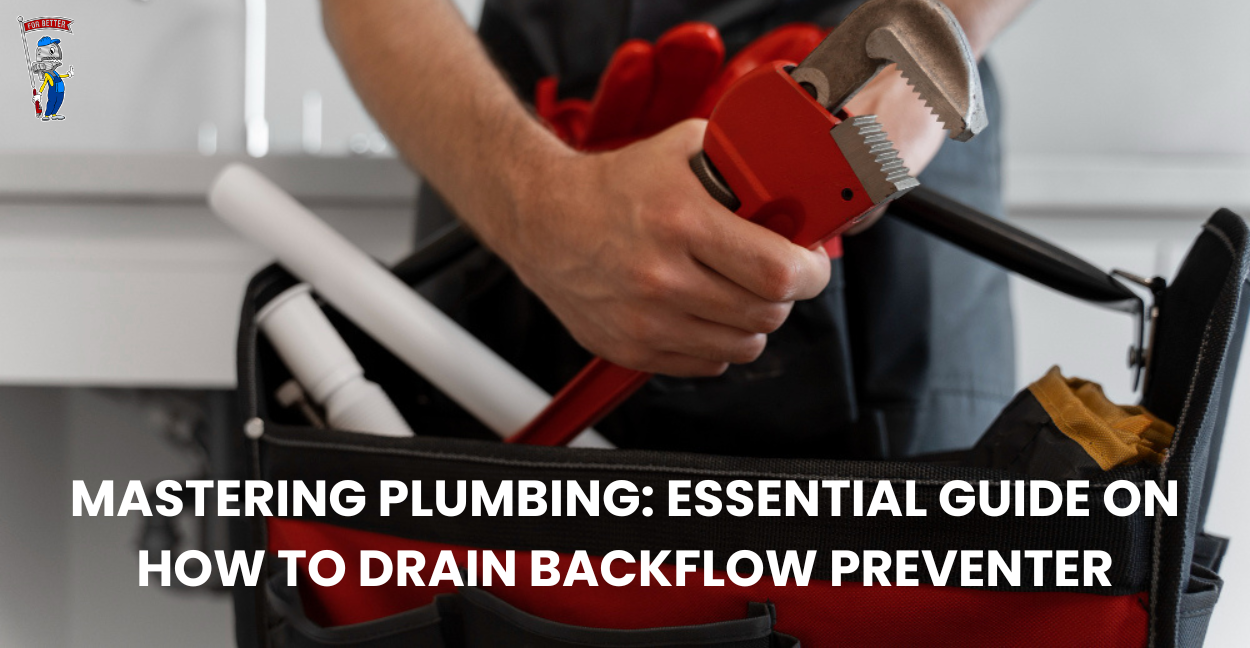Essential Guide on How to Drain Backflow Preventer
Backflow preventers are indispensable components of plumbing systems, serving the critical function of ensuring that water flows in the intended direction and preventing contamination of clean water sources. However, to maintain their effectiveness and prolong their lifespan, backflow preventers require regular maintenance, including the essential task of draining. This article aims to provide a detailed overview of the process involved in draining backflow preventers, offering valuable insights into why it’s necessary and how to do it effectively.
Understanding Backflow Preventers
Before diving into the specifics of draining backflow preventers, it’s essential to grasp their fundamental role in plumbing systems. Backflow preventers are mechanical devices installed in plumbing systems to prevent the reverse flow of water, which could potentially carry contaminants or pollutants back into the clean water supply. They come in various types, including double-check valves, reduced pressure zone (RPZ) valves, and pressure vacuum breakers, each tailored to specific applications and regulatory requirements.
Importance of Draining Backflow Preventers
Draining backflow preventers is a proactive measure aimed at preventing potential damage and ensuring the continued functionality of these vital devices. During colder months or periods of inactivity, water left stagnant inside the preventer can freeze, leading to cracks or ruptures that compromise its integrity. By draining the backflow preventer before such conditions arise, you not only safeguard against costly repairs but also uphold the safety and purity of the water supply.
Step-by-Step Guide on How to Drain Backflow Preventer
Turn Off the Water Supply
Commence the draining process by locating the main water supply valve and shutting it off. This crucial step prevents any additional water from entering the backflow preventer during the maintenance procedure.
Release Pressure
To ensure safe and effective drainage, relieve any pressure trapped within the backflow preventer. This can typically be accomplished by opening test cocks or relief valves, allowing water to escape and equalizing the pressure inside the device.
Locate Drain Valves
Identify the drain valves positioned on the backflow preventer. Depending on the specific model and design, there may be multiple drain valves located at various points along the device.
Open Drain Valves
Carefully open each drain valve fully to facilitate the complete drainage of water from the backflow preventer. Be thorough in this step to ensure that no residual water remains trapped inside.
Flush the System
Following the drainage process, it’s advisable to flush the plumbing system to remove any accumulated sediment or debris. Briefly open the main water supply valve to allow clean water to flow through the system, flushing out any contaminants.
Close Drain Valves
Once the flushing process is complete, securely close all drain valves on the backflow preventer to prevent any water from re-entering the device.
Inspect for Leaks
Conduct a visual inspection of the backflow preventer and surrounding pipes to detect any signs of leaks or damage. Address any issues promptly to maintain the integrity of the plumbing system.
Maintenance Tips for Longevity
To ensure the optimal performance and longevity of your backflow preventer, consider implementing the following maintenance tips:
- Schedule regular inspections by a qualified technician to identify and address any potential issues before they escalate.
- Keep the area surrounding the backflow preventer clear of debris and vegetation to allow for proper ventilation and access during maintenance.
- Monitor water pressure levels regularly to ensure they fall within the recommended range for your specific backflow preventer model.
- Replace worn or damaged components promptly to prevent leaks and maintain the integrity of the device.
Common Mistakes to Avoid
When draining backflow preventers, avoid the following common mistakes to ensure a successful maintenance procedure:
- Neglecting to fully shut off the water supply before initiating the draining process, can result in water contamination or damage to the device.
- Failing to release pressure trapped within the backflow preventer before opening drain valves, leading to potential safety hazards or incomplete drainage.
- Using excessive force when opening or closing drain valves, may cause damage to the valve mechanisms or surrounding plumbing components.
- Skipping the flushing step after draining, can leave behind sediment or debris that may impede the proper functioning of the backflow preventer.
Benefits of Proper Drainage
Properly draining backflow preventers offers several significant benefits, including:
- Prevention of freezing-related damage during colder months, safeguarding the integrity of the device, and minimizing the risk of costly repairs.
- Preservation of water quality by eliminating stagnant water that could potentially harbor contaminants or pollutants.
- Extended lifespan of the backflow preventer, reducing the need for frequent replacements and associated maintenance expenses.
- Enhanced efficiency and reliability of the plumbing system, ensuring uninterrupted flow and consistent water pressure.
FAQs (Frequently Asked Questions)
How often should I drain my backflow preventer?
It’s recommended to drain your backflow preventer at least once a year to prevent sediment buildup and ensure proper functionality.
Can I drain my backflow preventer myself, or do I need to hire a professional?
While draining a backflow preventer can be done DIY, if you’re unsure or uncomfortable with the process, it’s best to hire a professional plumber to ensure it’s done correctly.
What should I do if I notice water discoloration after draining my backflow preventer?
If you notice water discoloration, it could indicate a more significant issue with your plumbing system. Contact a plumber to inspect the system and address any potential problems.
Is it necessary to shut off the water supply before draining the backflow preventer?
Yes, shutting off the water supply is essential to prevent water from flowing into the system while you’re draining it, which could lead to flooding or other complications.
How long does it take to drain a backflow preventer?
The time it takes to drain a backflow preventer can vary depending on factors such as the size of the device and the presence of sediment or debris. Generally, it can take anywhere from a few minutes to an hour.
Contact Us for draining your backflow preventer
Ensuring the proper maintenance of your backflow preventer is essential for preserving the safety and efficiency of your plumbing system. If you require assistance with draining your backflow preventer or any other plumbing maintenance tasks, don’t hesitate to contact us. Our team of experienced professionals is here to provide expert guidance and support.
And, also if you want to know How Much Backflow Testing Costs?, How to repair a Backflow Preventer, What is a Backflow Prevention Device and much more regarding Backflow. Feel free to check out our blog page we have covered all the information there in a detailed and easy-to-understand way.
Conclusion
Draining backflow preventers is a fundamental aspect of their maintenance regimen, serving to protect against potential damage and uphold the integrity of the water supply. By following the step-by-step guide outlined in this comprehensive overview, you can effectively drain your backflow preventer and mitigate the risk of costly repairs or contamination issues. Remember to perform this essential maintenance task regularly, particularly before periods of inactivity or freezing temperatures. With proper care and attention, your backflow preventer will continue to safeguard the purity of your water supply for years to come.



